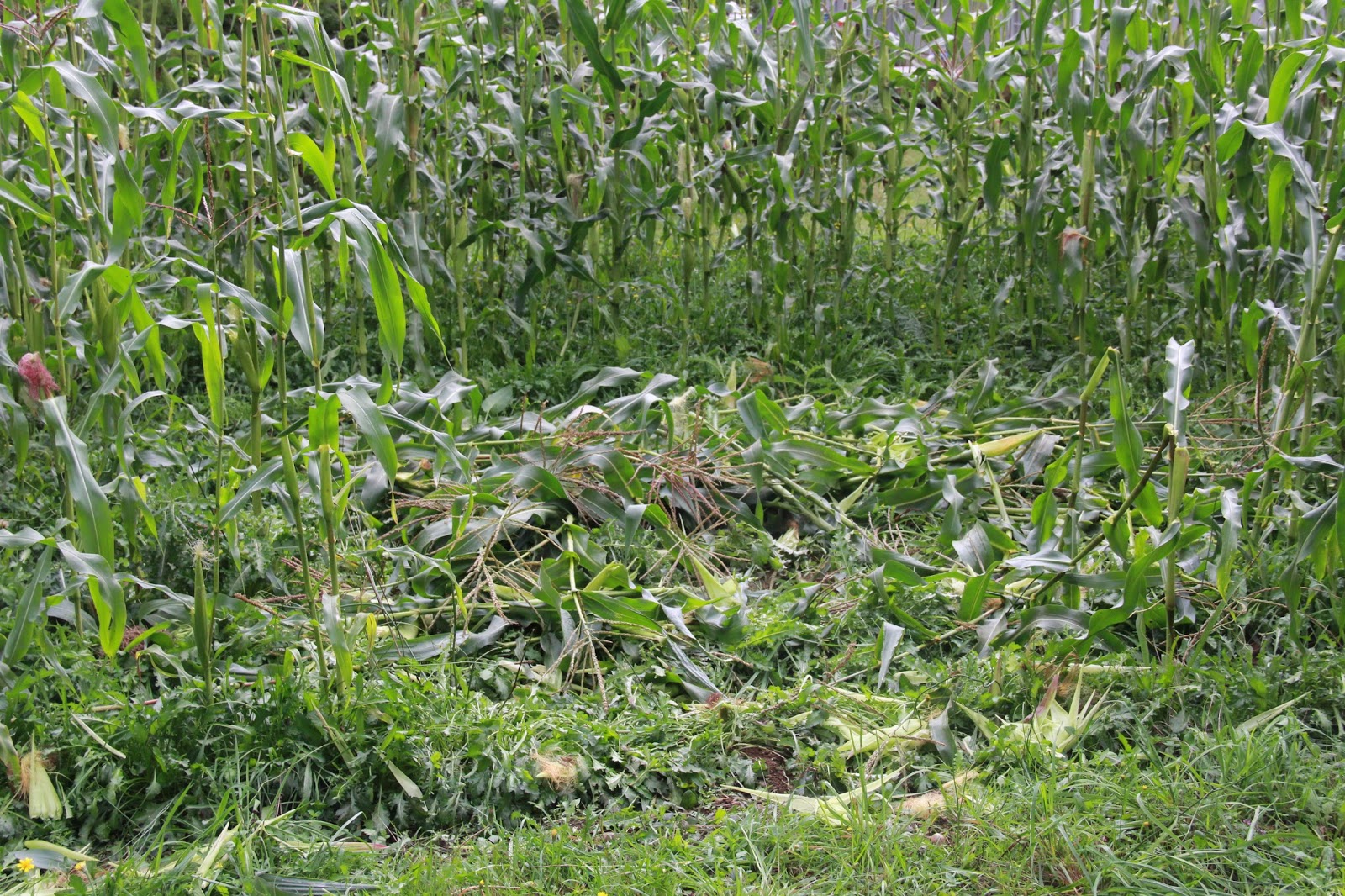Part two of our trip to the big city was going to the feed mill. I get a little jealous of reading other blogs and people having more than one feed mill to choose from. In our area there are many feed mills but they are all owned by chicken farms. They are not available to mix pig feed for little guys who may be interested in some bulk purchases. That being said; the one independent feed mill is good to work with, but the customers would benefit if they had some competition.
When I first started finishing pigs I found a guy who owned a
grinder-mixer relatively close to my house. The price was very good and I would call him up and go pick up a 1000 pound super sack of feed whenever I needed one. I think he was supplying several small time hobby farmers like myself and it worked out great!
 |
| Scoop the super sack into front end loader |
 |
| Dump into home made bulk feeder |
 |
| Store remainders in derelict chest freezer |
When year two of pigs came around "Jim the pig feed guy" wasn't grinding grain anymore because the state found out and said he needed to get a permit and keep batch samples. The permit wasn't expensive, but he just didn't want to deal with it so he stopped.
This suddenly made raising 10 - 12 pigs, selling them and trying to make a little bit of money a lot more difficult!
Options: 1. Buy from local feed store (really expensive)
2. Buy from feedmill (cheaper, but lots of time and gas)
3. Get a grain bin and have it delivered by feedmill (same price as pickup, but need a 3 ton minimum.)
So in raising pigs round two we were able to go with option 3 due to the beauty of craigslist. Found this for $500.
 |
| Grain bin on trailer ready to go its new home. |
Brought it home, made some footings with rebar, sonotube, and concrete to get to the point of raising it.
 |
| Push with loader, pull back with yellow strap |
and the feed mill sent the truck to auger in 3 tons of pig feed.
 |
| Filling with auger |
It was a little more involved than that with some paperwork form the feed mill and learning about sonotubes and footings to figuring out how to raise it. It all worked though! It paid for itself in time and money saved.
For round two this worked great. I raised 12 pigs, got two loads of feed. 1000 pounds of feed went to each pig (very inefficient, I know. Many plans in round three to deal with that issue. future blog post)
With this great grain bin why am I going to pick up feed at the feedmill? I am trying to get my feed efficiency to the point of being able to raise each pig on 800 pounds of feed. The books say I should be able to do that. Once again, future blog post on what changes I plan on making. I am raising 10 pigs. That adds up to needing 8000 pounds of feed. Problem: 3 ton minimum from the feed mill. I don't want to buy all 8000 pounds at once Feed shouldn't sit around for 5 months, fresh is better.
My plan is to feed them 16% hog feed that I get from the feedmill in sacks for the first 2000 pounds and then, when they are bigger and eating faster, fill the grain bin with 6000 pounds of 14% to finish them.
We picked up 400 pounds today. 400 pounds fills the bulk feeder. No sales tax as feed for animals that are to be sold is tax exempt. It was $105.20. My local feed store would have charged me $139.04, sales tax included. They do not want to mess with tax exempt status paperwork. The savings was worth the gas right there and when you add in the pop cans...
 |
| My "local", independent feed mill |
But you're thinking about the remaining 1600 pounds I will have to buy before I fill the grain bin. One good life change since the last round of pigs is that my daughter has violin lessons every week in the same town as the feed mill. Picking up a couple sacks each week while the pigs are small and eating slower will be easy to do and no new strain on the budget!
The feed mill seems to be running a brisk business supplying small farmers and small independent feed stores and the delivery driver has told me that he makes deliveries all over western Washington even up to Ferndale near the Canadian border and down into Oregon! I hope they don't end up going the way of Wolfkill feed (also in western Washington) as told about
here by Bruce at ebeyfarm.blogspot.com. They seem to have tapped the retail market he talks about in his blog entry.
There you have it; a trip to the "big" city, farm history, micro-economics, and planning!

















































